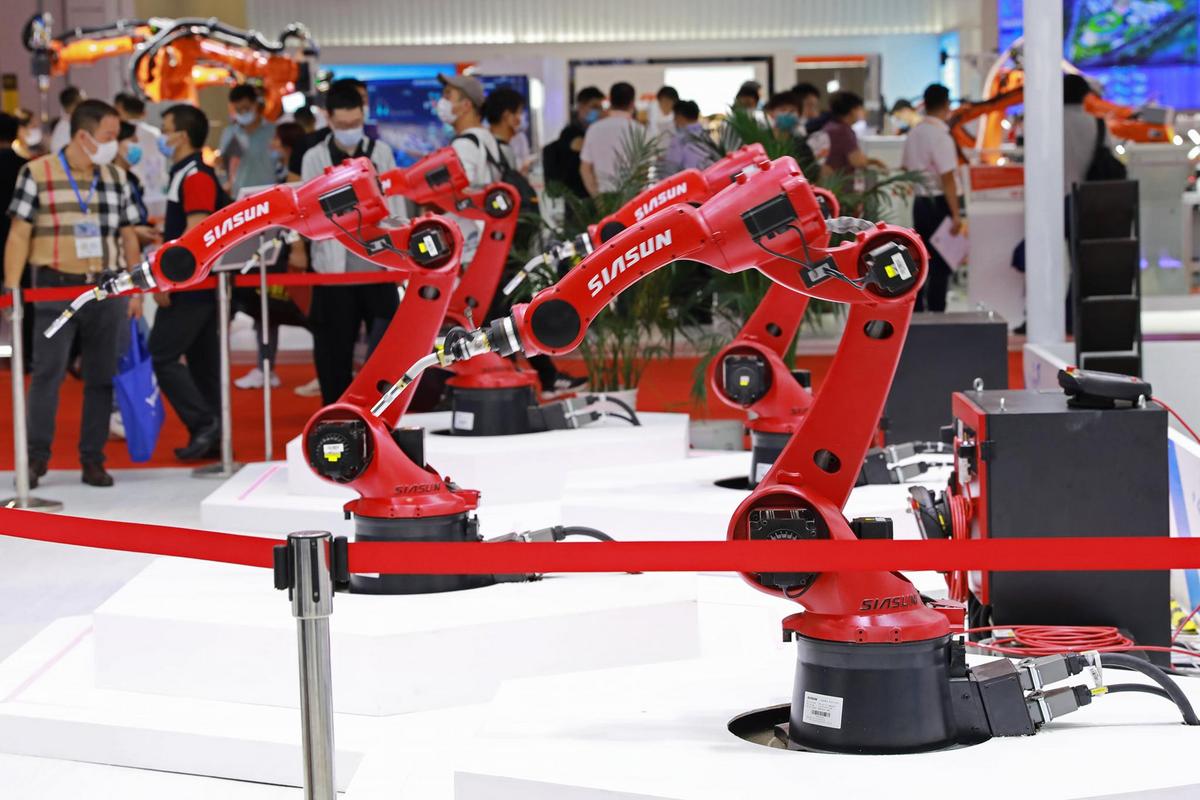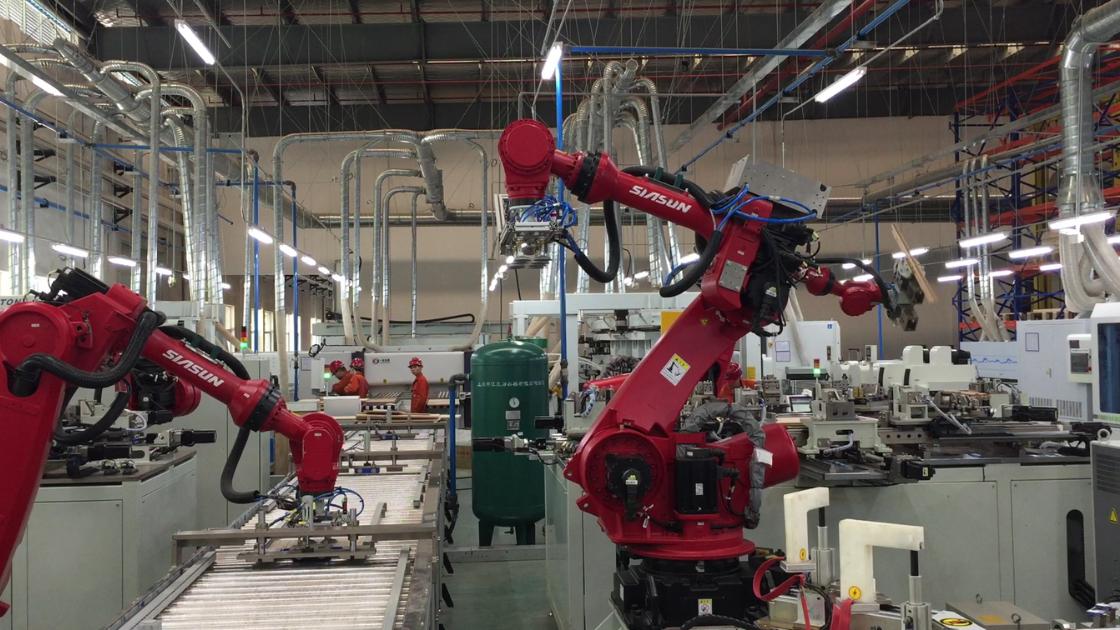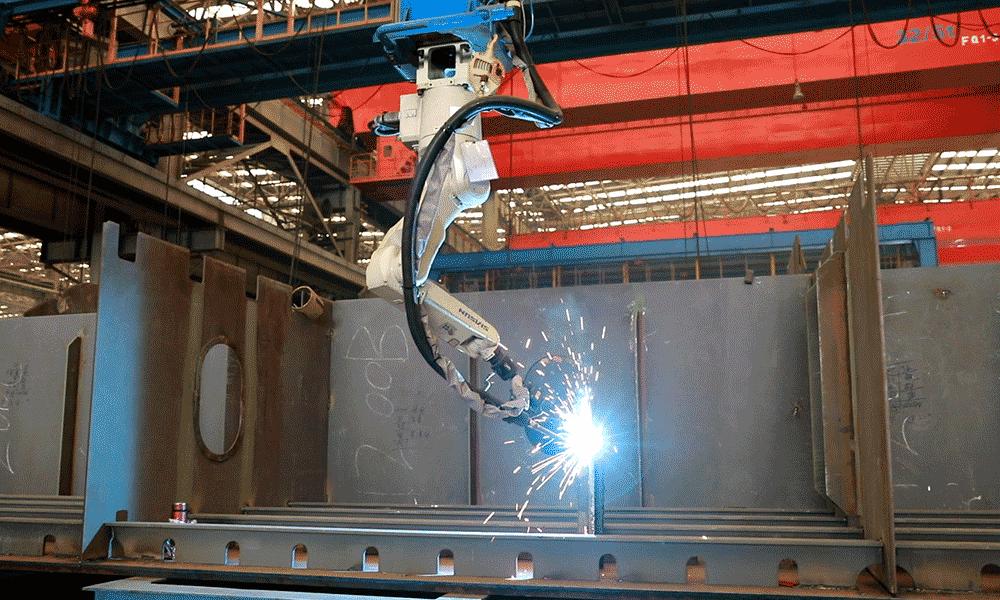TL;DR:
- Automation of welding increases productivity and precision.
- Robotic welding systems can perform tasks faster and more accurately than humans.
- The history dates back to the 1960s and current systems support various welding methods (TIG, MIG, MAG).
- Main advantages: increased precision, consistency, cost optimisation, safety.
- Challenges: technological barriers, impact on employment, need for staff training.
- Modern software and IoT facilitate integration and increase operational efficiency.
- Robotisation requires planning and can bring competitive advantages through stability and production optimisation.
In the industrial world, every new solution attracts attention, but it is robotic welding that is becoming a key player. Why? Robotic welding is the future, where precision is combined with efficiency and production costs are falling. Wondering how to introduce this technology into your facility? Get ready to discover the secrets that will put your company ahead of the competition. Find out why now is the time to change!
Why is robotic welding the future of industry?
Welding automation is an integral part of the industry, combining innovative technologies with traditional production methods. Robotic welding systems, such as those available from the Michalerobotic systems are becoming an indispensable tool in industry, as they significantly increase the productivity and precision of production processes. But what exactly is a robotised welding system? It is a sophisticated device that, when properly programmed, performs welding tasks with minimal human supervision. Its key advantage is its ability to perform complex welds faster and more accurately than traditional methods.
Introduction to robotic systems in an industrial context
Robotic systems are the cornerstone of modern manufacturing plants. Their introduction into industrial processes allows unprecedented flexibility and operational scalability, which is crucial in the face of constantly changing market requirements.
History of robotic welding: evolution and key developments
The roots of welding robotisation date back to the 1960s, when the first industrial robots began to be used in car manufacturing. Since then, the technology has evolved, bringing significant developments such as robots capable of handling a variety of welding methods, including TIG, MIG and MAG.
The future of welding and the impact of robotic systems
The future of welding is the further integration of advanced technologies into industrial processes. Robotic welding systems offer the potential to improve production quality and efficiency, which contributes to the competitiveness of companies. They enable companies to meet the challenges of today's market by adapting to the changing needs of customers.

What are the main advantages of robotic welding?
Robotised welding is becoming increasingly popular in industry thanks to its reliability, precision and cost-cutting potential. Observing the development of this technology, it is difficult not to see the benefits that the automation of production processes brings.
Improved precision and consistency in welding processes
Robotic welding systems provide precision unattainable by the human welder. With programmable controllers, Siasun works can repeat the same movement several times, minimising the risk of errors. As a result, the quality of the welds is higher and consistency is maintained even during long-term production. This means less rework and reduced material waste.
Optimising costs and increasing production efficiency
By automating welding, it is possible to significantly reduce operating costs. Robots work faster and more efficiently than humans, increasing production without the need for additional manpower. This enables companies to reduce wage-related costs and minimise downtime on the production line. In addition, robots do not need interruptions, enabling continuous production 24/7.
Improving safety in the working environment
Robotised welding significantly improves working conditions in production facilities. Robots perform the most hazardous tasks, reducing the risk of accidents. This allows operators to focus on controlling processes rather than physically performing the work. This also minimises workers' exposure to harmful substances and dust, an important health factor in the welding industry.
How to implement robotic welding systems in production?
Integrating robotic welding into production is key to increasing productivity and quality. In the context of implementing robotic systems, planning is key. Understanding production needs and designing the process properly is key.
Integrating robots into existing production lines requires detailed analysis and strategy. It is important to analyse which production steps will benefit most from automation. Subsequently, the implementation strategy should include staff training and modifications to the production infrastructure to fully exploit the potential of the new technology.
Steps in the implementation of robotic welding systems
The implementation process is divided into several steps: system design, selection of appropriate robots and technology, integration with existing systems, followed by testing and optimisation. Each of these steps requires precise planning and close collaboration with the engineering team. A well-designed implementation programme minimises the risks and maximises the benefits of robotisation.
Examples of successful implementations
The implementation of such systems in various industries shows how diverse robot applications can be. The automotive, aerospace and energy industries use robotised welding to improve product quality while reducing production costs. Such successes demonstrate that a well-planned implementation is an investment that brings tangible benefits to the company.
What challenges does robotic welding present?
Robotic welding is the future of the industry, but it also introduces a number of challenges that need to be understood and properly managed. As an experienced professional, I know that one of the key challenges is technological and organisational barriers. Robotic systems often involve high upfront costs and a complex integration process into existing production lines. Additionally, adequate infrastructure and team training is required, which can be a significant barrier for many companies.
Impact of robotisation on the employment and competence development of employees
Robotisation has a significant impact on employment. On the one hand, there are concerns about job cuts; on the other, new positions requiring specialised skills are being created. Employees need to develop competences in robot operation and programming. In this way, they gain new career opportunities and participate in the creation of modern production processes. Robotic welding station offers a broad spectrum of development opportunities.
Change management strategies when implementing new technologies
Change management is a key part of introducing robotic systems. It is important for the company to develop strategies that take into account communication, training and employee adaptation to the new environment. This process requires leadership commitment and transparency to enable employees to fully understand and accept the changes. As a result, such an operating model contributes to the organisation's efficiency and innovation.
How do sensor and software technologies support welding robotisation?
The role of advanced sensors in ensuring welding quality and precision is invaluable. These sensors monitor every step of the process and provide real-time data. They provide the accuracy and precision that is crucial in robotic welding. The sensors enable automatic correction of the welding course, which reduces errors and minimises the need for corrections. This saves time and materials.
Key functionalities of the new software in robotic systems include their ability to integrate with IoT technology. Modern welding software allows monitoring and analysis of data to improve operational efficiency. With graphical interfaces, operators can more easily programme robots and optimise processes. Such software is not only more intuitive, but also more efficient.
Use cases for IoT technology in industrial welding processes are becoming increasingly common. IoT connects machines and systems into a single communication network, allowing monitoring of machine status and detection of problems before they affect production. As a result, IoT increases the reliability of robotic welding systems and enables remote production monitoring. This makes it possible to react quickly to changes and avoid costly downtime.
How to increase efficiency through robotic production lines?
Robotic production lines are becoming the heart of modern manufacturing plants. When I think about the future of industry, automated production lines are a key element. With them, we can achieve process stability, which translates into consistent quality, and production optimisation.
Process stability
Robotic systems provide remarkable process stability, which translates into consistency and minimised errors. These systems can repeat the same tasks with a precision that is difficult for humans to achieve. Examples of automated production lines and their impact on company growth show how the use of robots minimises downtime and increases production reliability.
Production optimisation
Industrial robots enable full optimisation of production lines, allowing for increased productivity and reduced costs. The integration of modern technologies, such as advanced sensors and software, supports the measure stability and efficiency through modern technological solutions. This in turn leads to better resource management and greater flexibility in production. The challenges of today's market require us to constantly adapt, and robotic production lines provide a competitive edge that we can count on at all times.
Summary
Welding robotics represents the future of the industry through automation and innovation. It increases precision, productivity and safety while reducing costs. Implementing these technologies requires planning, but offers significant benefits. Despite challenges such as implementation barriers and impact on employment, modern sensors and software support process efficiency. The future of welding is robotic lines, which are driving business growth. Investing in robotisation is a step towards increased competitiveness and production flexibility.

